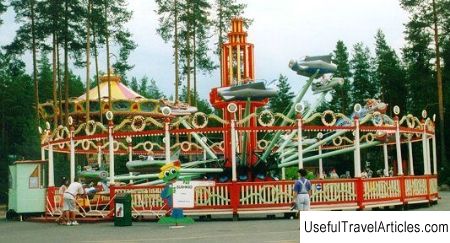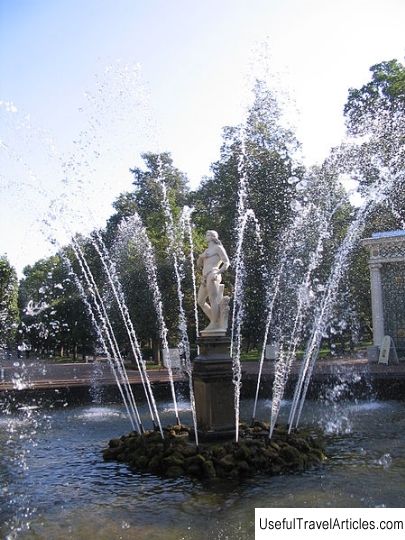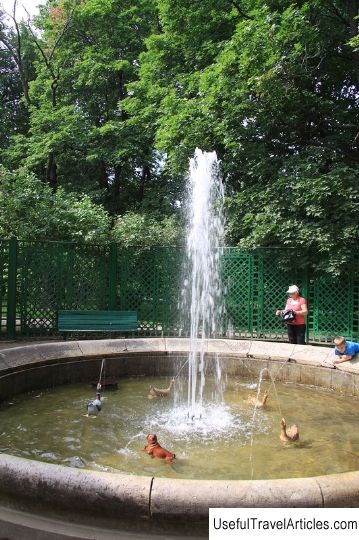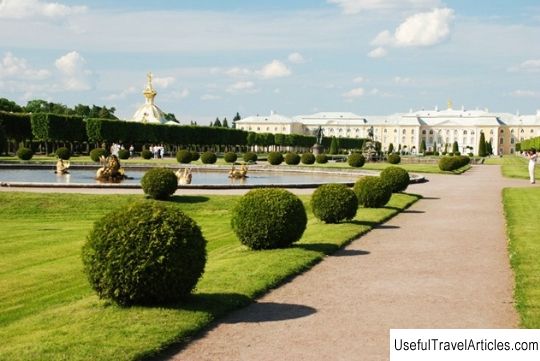Fountain ”Pyramid” description and photos - Russia - St. Petersburg: Peterhof
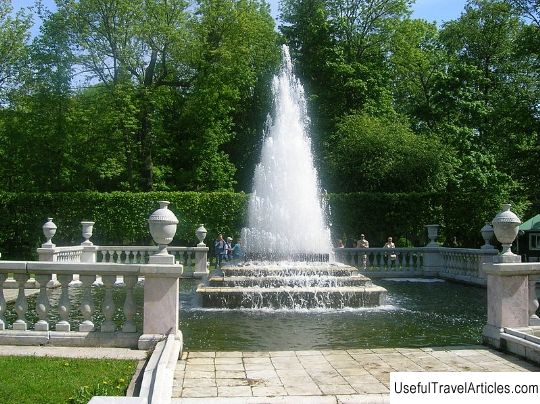
Pyramid fountain description and photos - Russia - St. Petersburg: Peterhof. Detailed information about the attraction. Description, photos and a map showing the nearest significant objects. Photo and descriptionThe Pyramid Fountain is located in the east of the Lower Park of the Peterhof Palace and Park Complex. The fountain, contrary to the Peterhof tradition, is located away from the ceremonial ensembles, separately, on a separate Pyramid Alley. "Pyramid" is the oldest and most beautiful monument of the Capital of Fountains. This fountain appeared in the Peterhof park during the reign of Peter and according to his plan. Then it got its name, thanks to its unusual shape, reminiscent of the Versailles "obelisk" (architect J. Ardouan-Monsard). The first mention of the fountain can be found in the decree of Peter I in 1721 The development of the project of the Pyramid fountain was entrusted to the chief architect of Peterhof N. Michetti. In the original sketch, the fountain is not depicted at all in the form of a tetrahedral pyramid, a complete copy of the Versailles "obelisk" with a triangular base. But Peter, who in his decree made it clear that he wanted the Pyramid to be in Peterhof, since the site chosen for the fountain had a quadrangular shape, made a note stating that the pyramid had four corners at the base. This is how the unique form of the fountain was determined. Mikhail Zemtsov supervised the construction of the fountain with the participation of the fountain works of master P. Saulem. The construction of the fountain began in the fall of 1721 and was completed by the summer of 1724. Then water was started up, but Peter, having examined and tested the work of the fountain, in October ordered the architect to remake the Pyramid and reduce the number of ledges in the cascade. The work was most likely completed only after the death of Peter I, by the summer of 1725. But even at that time, the appearance of the fountain was different from the modern one. Although even then a column of water 8 m high filled the pool and flowed down the three steps of the cascade. Then they were made of wood and covered with lead. By the beginning of the second half of the 18th century. regular gardens with clear planning geometry were a thing of the past. They were replaced by shady "English" gardens with winding paths and age-old trees. In the Lower Park, neatly trimmed trees and trellises gave way to large trees, and the fountain seemed to be almost lost, which gave it a special charm. The tapestries surrounding the fountain in the form of a labyrinth disappeared. Until the end of the 18th century. the appearance of the fountain remained practically unchanged, only in 1799 was the marble fence of the fountain and ledges made according to the project of V. Yakovlev (made back in 1770). The marble finish was made at the Peterhof Lapidary Factory. On June 6, 1800, construction work, which was under the direction of Brower, was completed. In this form, the fountain has survived to this day. The Pyramid fountain is a square pool with dimensions of 11x11m. It is crowned with a marble balustrade with an eight-meter pillar resembling a pyramid. Water flows through an inclined pipe into seven chambers of a square cast-iron box, which is hermetically sealed with a bronze lid with an opening of up to 505 nozzles, from the Pyramid Pond. The height of the jets is regulated by valves. Thus, a common array of the pyramid is created, consisting of seven tiers. Of all the fountains in the Peterhof park, the Pyramid fountain is the most water-consuming - about 200 liters of water per second go here. The water cannon of the fountain is located on an elevation of three steps. Filling the quadrangular pool, water flows into four cascades, each of which has five steps, into a moat that encircles the entire ensemble along the perimeter. On the sides of the cascades there are marble bridges, along which you can approach the balustrade. Like other Peterhof monuments, originally conceived only as a monument to victory in one important war for Russia, today the Pyramid fountain (like the rest Peterhof) is also a monument to the victory in the Great Patriotic War. The fountain was simply disfigured by the German invaders (it was not blown up, but smashed). In 1953, it was brought back to life by P. Lavrentyev with his sons, as well as I. Smirnov in 1953. It can rightfully be considered an obelisk in the name of the centuries-old struggle of the Russian people for the inviolability of their cultural heritage.      We also recommend reading Wulff Palace (Castillo Wulff) description and photos - Chile: Vina del Mar Topic: Fountain ”Pyramid” description and photos - Russia - St. Petersburg: Peterhof. |
